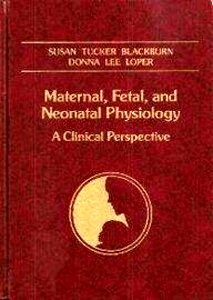Hemovigilance is a "quality process" which aims to improve quality and increase safety of blood transfusion, by surveying all activities of the blood transfusion chain, from donors to recipients.
Hemovigilance programmes have now been in existence for over 15 years, but many countries and centers are still at the development stage. This valuable resource brings together the main elements of such programmes and shows the different types of models available. A general introduction includes Chapters on hemovigilance as a quality tool for transfusion as well as concepts of and models for hemovigilance. The core of the book describes how Hemovigilance systems have been set up and how they work in hospitals, blood establishments, and at a national level. These Chapters are written according to a structured template: products and processes, documentation of jobs, monitoring and assessment, implementation and evaluation of measures for improvement, education and training. Chapters on Hemovigilance at the International level, Achievements and new developments complete the picture.
Hemovigilance is above all a practical guide to setting up and improving hemovigilance systems, whilst raising awareness for reporting adverse events and reactions.
This is the first international book on hemovigilance, assembling all the vital issues in one definitive reference source - essential reading for all staff involved in the transfusion process
Part 1 General Introduction
1 Introduction, 3
Ren e R.P. de Vries
2 Hemovigilance: A Quality Tool for the Blood Transfusion Chain, 5
Ren e R.P. de Vries
3 Concepts and Models, 12
Ren e R.P. de Vries and Jean-Claude Faber
Part 2 Hemovigilance of the Blood Transfusion Chain (Blood Establishment and Hospital)
Section 2.1: Setting up a Hemovigilance System
4 Setting Up or Consolidating a System for Donor Hemovigilance at the Level of a Blood Establishment, 21
Johanna Wiersum-Osselton, Wim de Kort, Tanneke Marijt-van der Kreek, and Jeroen de Wit
5 Preparation of Blood Components, 36
Tomislav Vuk
6 Establishment of Hemovigilance for the Testing, Storage, Distribution, Transport, and Issuing of Blood and Blood Components: The Example of Greece, 52
Constantina Politis
7 Medical Decision, Ordering, Administration of Component, and Monitoring of the Patient, 61
Mickey B.C. Koh, Ramir Alcantara, Mark Grumbridge, and Ai Leen Ang
Section 2.2: How the System Works
8 Blood Donation: An Approach to Donor Vigilance, 77
Peter Tomasulo, Madhav Erraguntla, and Hany Kamel
9 Preparation of Blood Components, 99
Erhard Seifried, Reinhard Henschler, Juergen Luhm, Thea Mueller-Kuller, Hans-Ulrich Pfeiffer, Walid Sireis, and Markus M. Mueller
10 Testing, Issuing, and Transport of Blood Components, 113
Constantina Politis
11 Clinical Activities: Medical Decision-making, Sampling, Ordering Components, Administration, and Patient Monitoring, 126
Clare Taylor
Part 3 National or Regional Hemovigilance Systems
12 The French Hemovigilance Network: From the Blood Scandal to Epidemiologic Surveillance of the Transfusion Chain, 147
Philippe Renaudier
13 The Japanese Hemovigilance System, 159
Hitoshi Okazaki, Naoko Goto, Shun-ya Momose, Satoru Hino, and Kenji Tadokoro
14 Setting up a National Hemovigilance System: SHOT, 168
Hannah Cohen and Lorna M. Williamson
15 The Dutch Hemovigilance System: Transfusion Reactions in Patients (TRIP), 180
Martin R. Schipperus, Johanna Wiersum-Osselton, Pauline Y. Zijlker-Jansen, and Anita J.W. van Tilborgh-de Jong
16 Regulatory, Public Health, and International Aspects of Hemovigilance in Canada, 191
Peter R. Ganz and Jun Wu
17 Setting up and Implementation of the National Hemovigilance System in Italy, 204
Giuliano Grazzini and Simonetta Pupella
18 The Australian Hemovigilance System, 209
Erica M. Wood, Lisa J. Stevenson, Simon A. Brown, and Christopher J. Hogan
19 Biovigilance in the United States, 220
D. Michael Strong, Barbee Whitaker, Matthew J. Kuehnert, and Jerry A. Holmberg
20 Arab Hemovigilance Network, 226
Salwa Hindawi, Magdy Elekiaby, and Gamal Gabra
Part 4 Hemovigilance at the International Level
21 Hemovigilance in the European Community, 235
Jean-Claude Faber
22 International collaboration, 253
Paul F.W. Strengers
23 Hemovigilance in Developing Countries, 260
Jean-Claude Faber
Part 5 Achievements
24 Achievements Through Hemovigilance, 281
Jean-Claude Faber and F atima Nascimento
Part 6 Developments
25 Vigilance of Alternatives for Blood Components, 305
Dafydd Thomas
26 Surveillance of Clinical Effectiveness of Transfusion, 322
Brian McClelland and Katherine Forrester
27 Biovigilance, 326
Jerry A. Holmberg, Matthew J. Kuehnert, and D. Michael Strong
Appendices
Appendix A Glossary, 343
Appendix B Proposed standard definitions for surveillance of non infectious adverse transfusion reactions, 351
Appendix C Standard for surveillance of complications related to blood donation, 360
Index, 369

